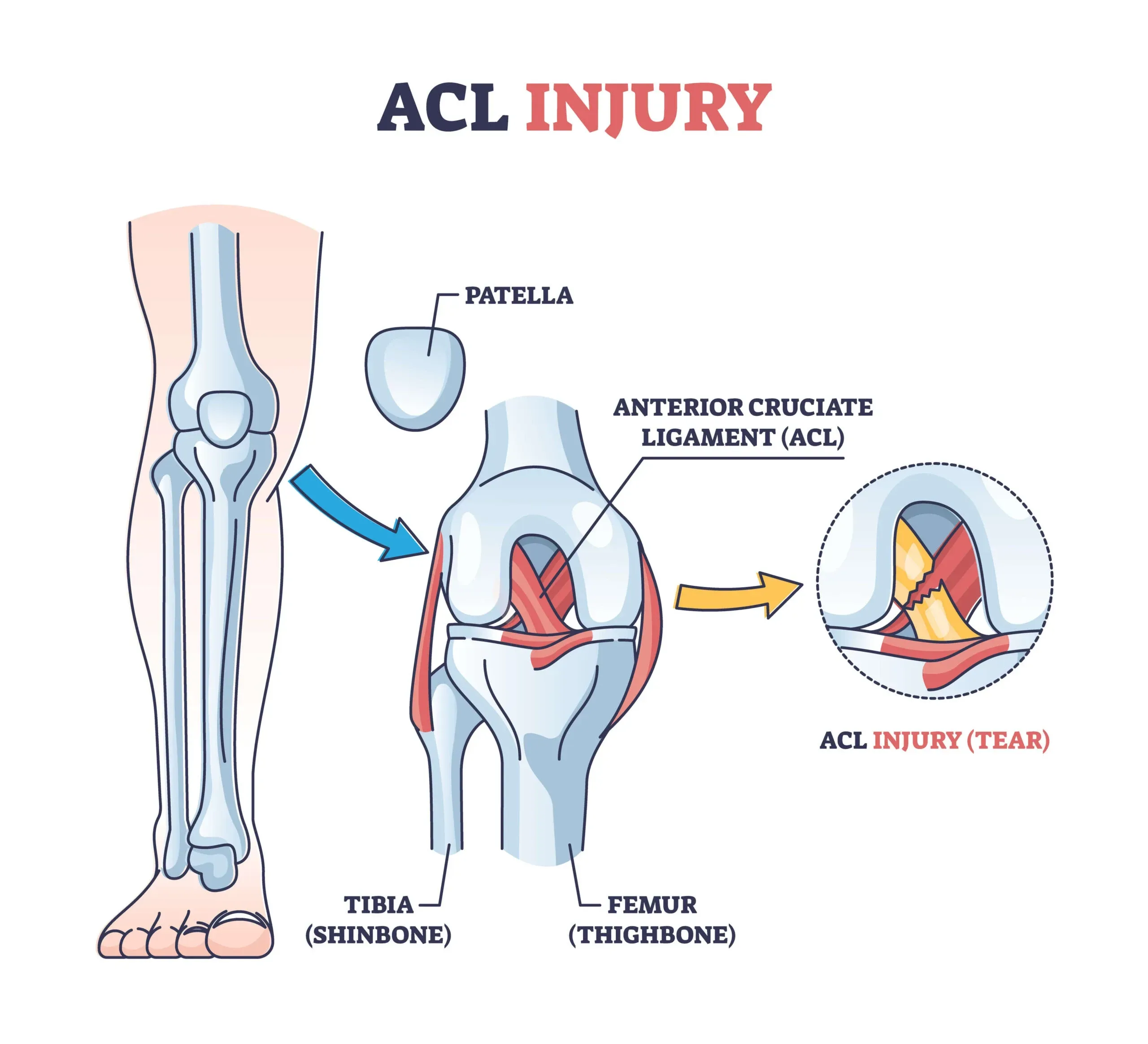
An Anterior Cruciate Ligament (ACL) injury is a common and serious knee injury often occurring during sports or physical activities. The ACL is a crucial ligament that helps stabilise the knee joint, connecting the thigh bone (femur) to the shin bone (tibia). When this ligament is torn or overstretched, it can cause severe pain, swelling, and instability in the knee.
ACL injuries typically happen during activities that involve sudden stops, changes in direction, or landing from a jump. Some common causes include:
Certain factors, such as poor conditioning, improper landing techniques, and participation in high-risk sports like football, basketball, and skiing, may increase the risk of an ACL injury.
When an ACL injury occurs, individuals may experience:
If an ACL injury is suspected, it is essential to seek medical attention promptly. A healthcare professional will perform a physical examination and may order imaging tests, such as an X-ray or MRI, to confirm the diagnosis and assess the extent of the injury.
Treatment for an ACL injury depends on the severity of the tear and the individual’s goals. Non-surgical treatment may involve rest, ice, compression, elevation (RICE), and physical therapy to restore strength and stability. In more severe cases or for athletes who wish to return to high-demand activities, surgical reconstruction of the ACL may be necessary.
Athletes can engage in proper conditioning, use correct techniques during sports, and wear appropriate protective gear to reduce the risk of ACL injuries. Incorporating exercises focusing on balance, stability, and proper landing techniques can also help prevent ACL injuries.
Recovery from an ACL injury can be lengthy, often taking several months. It is crucial to follow a rehabilitation program under the guidance of a healthcare professional to ensure a safe and successful return to activities.